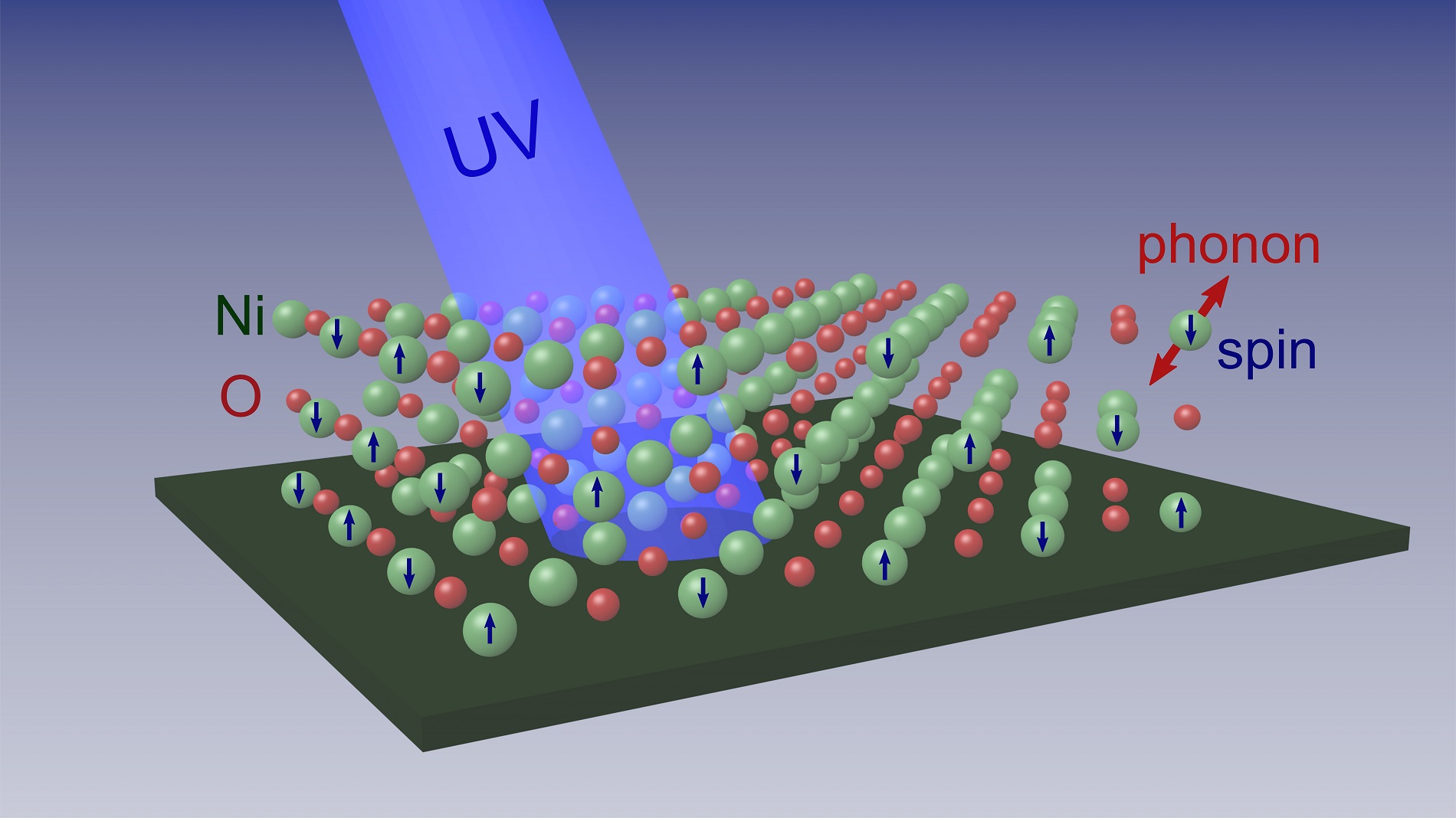January 15, 2018
By Richard Chang
RIVERSIDE, Calif. (www.ucr.edu) – Researchers at UC Riverside used an unconventional approach to determine the strength of the electron spin interactions with the optical phonons in antiferromagnetic nickel oxide (NiO) crystals.
NiO is a promising material for spintronic devices, where signals are transmitted not by electrical currents but rather by spin waves, consisting of propagating disturbances in the ordering of magnetic materials, in a domino-like fashion. The interdisciplinary team of researchers, led by Alexander Balandin, distinguished professor of electrical and computer engineering, used ultraviolet Raman spectroscopy to investigate how spin ordering affects the energies of phonons in these materials. Phonons are quanta of vibrations of ions, which constitute the crystal lattice of materials. Phonons can interact with electrons and their spins, leading to energy dissipation. Practical applications of spintronic devices in information processing require accurate knowledge of the strength of the electron spin interaction with phonons.
“Despite the fact that nickel oxide has been studied for many years, mysteries remained,” Balandin said. “Our results shed light on some of the long-standing puzzles surrounding this material, reveling unusual spin–phonon coupling.”
The UC Riverside team also included Jing Shi, professor of physics, and Roger Lake, professor of electrical and computer engineering, in addition to members of their research groups, graduate students, and postdoctoral researchers.
“Our team was able to accomplish this task by using Raman spectroscopy with an ultraviolet laser, instead of conventional visible light lasers. The trick worked because relevant phonon peaks can be seen with much better resolution in the spectrum of nickel oxide under ultraviolet laser excitation,” Balandin added.
The investigation of the spin-phonon interaction will have important implications for development of spintronic devices. Unlike conventional electronic transistors, spintronic devices encode and communicate information, not with the electric currents, but rather with the spin currents or spin waves. For this reason, electrically insulating magnetic materials, such as nickel oxide, can be used for memory storage and information processing.
Avoiding electrical currents, spintronic devices have a potential for ultra-fast and low-energy-dissipation operation. Interaction with phonons is one of the energy dissipation mechanisms in spintronics. The data reported by the UCR researchers may help in optimizing the design of spintronic devices by altering phonon properties and the way phonons interact with electron spins.
“We hope that our results will contribute to better understanding of mechanisms of spin wave interactions with the crystal lattice vibrations, and energy loss channels in nickel oxide devices,” Balandin said. “The next step will be investigation of the spin–phonon interaction in nanoscale thin films and structures made of this important antiferromagnetic material.”
The research was conducted under the auspices of the Spins and Heat in Nanoscale Electronic Systems (SHINES) Energy Frontier Research Center at UC Riverside, which is funded by the U.S. Department of Energy [link of SHINES to http://efrcshines.ucr.edu/].
Titled “Spin – Phonon Coupling in Antiferromagnetic Nickel Oxide,” an article describing the research conducted at UC Riverside was published in the journal Applied Physics Letters. In addition to Balandin, Shi, and Lake, the authors include Ece Aytan, Bishwajit Debnath, Fariborz Kargar, Yafis Barlas, Monica M. Lacerda, and Junxue Li. Aytan, the first author of the paper, who conducted Raman spectroscopy measurements, is a doctoral candidate in Balandin’s Phonon Optimized Engineered Materials (POEM) Center at UCR.













